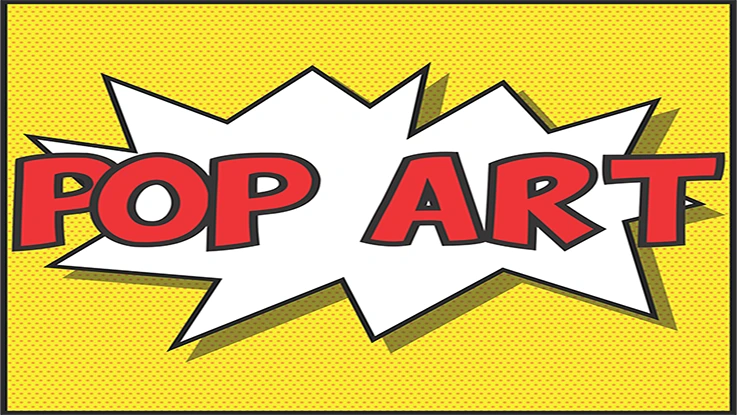
The Essence of Pop Art and its Icons
The Pop Art movement, emerging in the 1950s and peaking in the 1960s, reshaped the art world by challenging traditional norms and elevating popular culture to high art. Rooted in the post-war era, it gained momentum through influential figures like Andy Warhol, Roy Lichtenstein, and collaborations with musicians such as The Beatles. Additionally, the movement extended to fashion, with Yayoi Kusama, and influenced cinema, as seen in Stanley Kubrick’s work. This article explores Pop Art’s origins, expansion, key figures, and its impact on visual arts, music, cinema, and contemporary culture.
The Pop Art movement responded to the 1950s socio-political landscape, breaking away from elitist abstract expressionism, and it has been a an obvious effect of the Pop Culture.
Impact on Visual Arts
Pop Art had a profound impact on the visual arts by blurring the boundaries between high and low culture. The movement emphasized the democratization of art, making it more accessible to a wider audience. By appropriating imagery from advertising, comic books, and consumer products, Pop artists challenged the traditional art establishment and redefined the concept of artistic expression.
Visual Art Icons
Andy Warhol
Andy Warhol, often hailed as the “Pope of Pop,” played a pivotal role in defining the Pop Art aesthetic. His fascination with celebrity culture, consumerism, and mass production led to the creation of groundbreaking works that challenged traditional notions of art. Warhol’s studio, known as The Factory, became a hub for artistic experimentation and collaboration. Notable works such as “Gold Marilyn Monroe,” “Brillo Boxes,” and the famous “Eight Elvises” showcased Warhol’s unique ability to merge high art with popular culture.
Roy Lichtenstein
Roy Lichtenstein, another luminary of the Pop Art movement, drew inspiration from comic strips and advertisements. His use of bold colors, Ben-Day dots, and comic-style speech balloons became distinctive features of his work. “Whaam!” and “Drowning Girl” are quintessential examples of Lichtenstein’s ability to elevate mass-produced imagery to the status of high art. Through his meticulous technique and playful exploration of popular culture, Lichtenstein left an indelible mark on the Pop Art landscape.
Pop Art in Music
The Beatles
The Beatles, one of the most influential bands of the 20th century, embraced the Pop Art movement and collaborated with artists such as Sir Peter Blake on the iconic “Sgt. Pepper’s Lonely Hearts Club Band” album cover. Blake’s use of collage, vibrant colors, and playful imagery perfectly captured the spirit of the era and showcased the intersection of music and visual arts. The Beatles’ association with Pop Art further solidified the movement’s influence on popular culture.
David Bowie
David Bowie, a true chameleon of the music industry, seamlessly blended with the Pop Art movement. His flamboyant costumes, androgynous personas, and iconic album covers as for example Ziggy Stardust, embodied the movement’s bold colors and everyday imagery.
Bowie embraced the movement’s exploration of celebrity culture and mass media. In essence, Bowie wasn’t just a musician influenced by Pop Art, he was a living, breathing embodiment of its spirit, constantly challenging and redefining artistic expression.
Pop Art in Fashion
In the realm of fashion, Japanese artist Yayoi Kusama became a pioneer in incorporating Pop Art aesthetics into her designs. Known for her avant-garde approach and collaboration with fashion designers, Kusama’s work seamlessly blended bold patterns, vibrant colors, and a sense of playfulness. Her unique perspective on fashion echoed the ethos of Pop Art, challenging traditional norms and pushing the boundaries of artistic expression within the realm of clothing and accessories.
Pop Art in Cinema
Stanley Kubrick, the visionary director renowned for his distinctive cinematic style, also drew inspiration from Pop Art aesthetics in his films. Kubrick’s meticulous attention to visual details and his use of bold colors and striking compositions can be seen as an extension of the Pop Art movement. Films like “A Clockwork Orange” and “2001: A Space Odyssey” incorporated elements reminiscent of Pop Art, bridging the gap between fine art and cinema and influencing subsequent generations of filmmakers.
The Enduring Echo
Post-war Pop Art reshaped 20th century art. Warhol, Lichtenstein, The Beatles & Kusama challenged art norms, elevating pop culture. Even cinema felt Pop Art’s influence with Kubrick, showcasing its lasting impact across disciplines. Pop Art’s legacy inspires generations, forever captivating and challenging the status quo.



